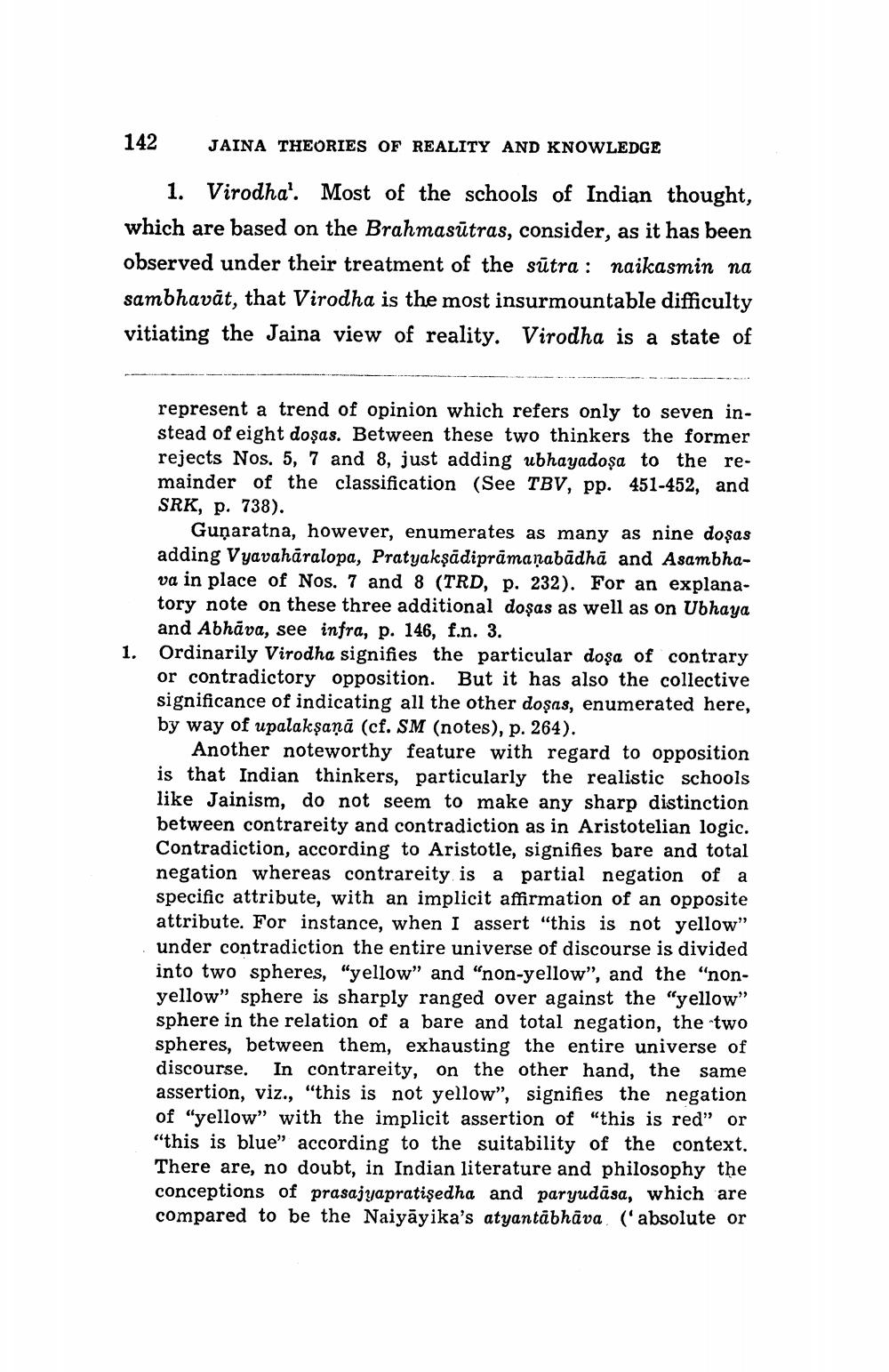________________
142
JAINA THEORIES OF REALITY AND KNOWLEDGE
1. Virodha'. Most of the schools of Indian thought, which are based on the Brahmasūtras, consider, as it has been observed under their treatment of the sūtra : naikasmin na sambhavát, that Virodha is the most insurmountable difficulty vitiating the Jaina view of reality. Virodha is a state of
represent a trend of opinion which refers only to seven instead of eight dosas. Between these two thinkers the former rejects Nos. 5, 7 and 8, just adding ubhayadosa to the remainder of the classification (See TBV, pp. 451-452, and SRK, p. 738).
Gunaratna, however, enumerates as many as nine doşas adding Vyavahāralopa, Pratyakşādiprāmaņabādha and Asambhava in place of Nos. 7 and 8 (TRD, p. 232). For an explanatory note on these three additional dosas as well as on Ubhaya and Abhāva, see infra, p. 146, f.n. 3. Ordinarily Virodha signifies the particular doşa of contrary or contradictory opposition. But it has also the collective significance of indicating all the other doşas, enumerated here, by way of upalaksaņā (cf. SM (notes), p. 264).
Another noteworthy feature with regard to opposition is that Indian thinkers, particularly the realistic schools like Jainism, do not seem to make any sharp distinction between contrareity and contradiction as in Aristotelian logic. Contradiction, according to Aristotle, signifies bare and total negation whereas contrareity is a partial negation of a specific attribute, with an implicit affirmation of an opposite attribute. For instance, when I assert "this is not yellow" under contradiction the entire universe of discourse is divided into two spheres, "yellow" and "non-yellow”, and the "nonyellow" sphere is sharply ranged over against the "yellow" sphere in the relation of a bare and total negation, the two spheres, between them, exhausting the entire universe of discourse. In contrareity, on the other hand, the same assertion, viz., "this is not yellow”, signifies the negation of "yellow” with the implicit assertion of “this is red" or "this is blue” according to the suitability of the context. There are, no doubt, in Indian literature and philosophy the conceptions of prasajyapratişedha and paryudāsa, which are compared to be the Naiyāyika's atyantábhāva ('absolute or




